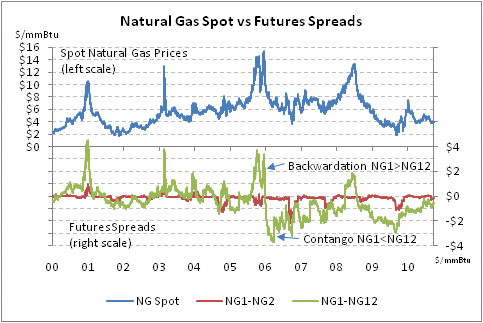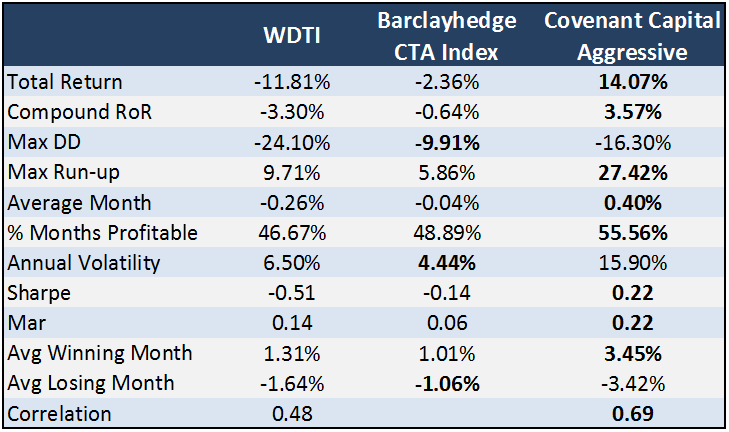ETF s versus Futures Points and Figures
Post on: 14 Апрель, 2015 No Comment

UPDATED Feb 6 with a Mea Culpa
In the comments, and in my email I received corrections on my math. That 500 SPY equal 1 ES. That changes the calculation on my profit/loss. Also in calculating the emini profit, I made the mistake of calling a 5 lot emini trade a one lot trade. My confusion came from 5 ES=1 SP.
The advantages of futures are these:
1. lower commissions
2. little or no slippage, no trading against your order, no internalization of your order.
3. more bang for the buck, you are able to control a lot of stock for smaller money.
4. ability to trade 24/7
5. Faster electronic systems. Futures platforms are speedier for the retail trader.
6. Better taxation
ETF advantages
1. Less volatility; the market isnt as highly leveraged
2. More accessible through more retail platforms. Your broker might not offer futures.
3. If you decide to step up your size, your commission rate can go down. In futures to get rates down you must lease or purchase a seat at a futures exchange.
Original Post with corrections below (corrections in italics )
There are a lot of fund managers that recommend ETFs. There are a lot of traders that like trading them, and the retail public seems to like them. ETFs can be pretty innovative. They allow you to take a flyer on a market segment, while still incorporating Eugene Famas efficient market hypothesis(EMH ) because you arent picking a single stock, but a basket of them.
If you adhere to the EMH, you will be invested in a mutual fund or ETF that replicates that broader market. Buying sector ETFs allow you to raise the beta in your portfolio, assume a little more risk, without assuming the risk of holding one single stock.
However, if you are looking to increase your beta on the entire market, youd be better off trading futures. If you want to cash in on the commodities craze dont trade a commodities ETF. Youll be better off in the futures market.
Lets compare and contrast a popular futures contracts with its ETF. Everyone knows about the S+P 500. It is the fund managers index. The ETF that replicates that index is called the $ SPY or spider. The futures contract that replicates it is the S+P 500, but there is a bite sized contract called the emini S+P that is exclusively traded electronically.
For this example, assume that you thought the market was going up. We will also assume you are clairvoyant, and bought the low of the day and sold the high of the day.
If you buy a $ SPY. the commission rate for a normal trader is $9.99. Some discount houses dont charge you a commission at all! Of course, that means they are trading in house against your order and giving you a worse price than you would have gotten in the market. Or, they are selling your order to a hedge fund or bank and you still are getting a worse price. Lets assume your slippage is only one penny, its probably a bit more. There is no free lunch anywhere in the market. If you are buying 1000 contracts though, its still costing you an extra $10 on each side of your trade, or $20 all day.
Yesterdays $ SPY range (2/4/2011) was 130.23-131.20, or .97. If you bought the low and sold the high you made $970. Nice trade! Of course, your commission costs were $19.98, slippage costs $20, leaving you with a profit of $930.02. Uncle Sam wants his piece. That will cost you 35% in the top tax bracket. $325.51 bucks. Your net/net is $604.51. You can still buy the first round of beers at the close.
But, what if you did the same thing in the futures market using an eMini S+P? The cost to trade 1 eMini future is $2.01. To compare apples to apples, you would have executed a two lot. 2 ES=500 SPY Commission=$4.02. In futures, there is no internalization or payment for order flow. You play in the same pool with everyone else. Advantage here is the futures market by $35.97 all in on commissions and slippage.
The range yesterday was 1298-1308.50 If you bought the low, and sold the high you made 10.50. On a 2 lot trade, you made $525. Less commissions, you made $520.98. Uncle Sam still wants his piece, but he wants it in a different manner. Futures are taxed at 60/40. This means 60% of your gain is taxed at the capital gains rate, 15%, and 40% at whatever the highest tax bracket rate is. In this case, the highest rate is 35%. The blended rate works out to be roughly 23% or $119.83. Your net profit is $401.15 .

ETF profit, 604.51. ES profit $401.15. $203.36 in favor of the ETF. For every future you add, you get $262.50 added to your profit. It costs you $2.01 to add. If you trade 3 futures, the profit is equivalent.
Already I can hear the critics and retail brokers screaming.
Here are some other differences in the markets. Futures trade 24 hours, and are more volatile than ETFs. Id readily concede that point. Because futures are traded on margin, they have more volatility. ETFs margin can only be 50%. A futures contract will always have more intraday volatility than a cash equity contract.
They will say the ranges of the two products are different, so of course the money will be different. However, dollar for dollar the all in costs of trading+taxes are significantly higher in the ETF world than the futures world. Lets assume I made $1000 bucks in each. After commissions, slippage and taxes, my take in the ETF would be $624.01. In futures, $754.52. You are giving up 21% of your profits for the same analysis that goes into the trade!
You might say, I dont trade 1000 lots in the stock market. Thats cool. You can assume as much or as little risk as you want in the futures trading. Just remember 1 eMini
250 500 shares. As you trade less, the advantage swings to futures even more, because commission rates get even cheaper by comparison.
The bang for the buck you get with futures, lower all in commissions, and lower taxes gives you incentive to take on that volatility. Plus, virtually all futures are traded electronically. You are not waiting to find out if you are filled. You are filled in the blink of an eye.
The nice thing about ETFs is that there are so many of them. They are pretty versatile so you can use different ones to try and take on more risk. The federal government via the SEC prohibits trading of narrow based indexes. Exchanges like CME Group and ICE cant offer a futures contract based on a narrow basket of stocks. There are ETFs that you may want to trade that cannot be replicated by futures.
But, if you are going to trade Gold ETFs you can see from the above example youd be far better off trading Gold eMinis. If you want to trade an Oil ETF, you are far better off trading an Oil eMini. Take a flyer on a currency? You are better off trading eMicros or eMini currencies at $ CME .
You get the picture. Expand your horizons and you will expand your profitability.
thanks for the link Doug Ross. welcome to his readers
Wilkommen readers of Aktienboard.














